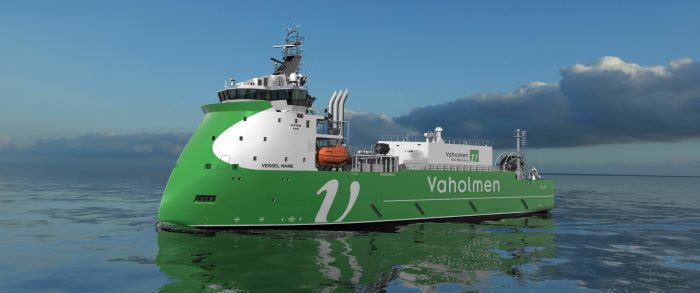Vaholmen VOC Recovery AS Developed A Novel Concept For Decarbonizing Shipping
September 1, 2022 Maritime Safety News
VOC capture and utilization during loading of crude oil tankers is an important contribution to decarbonisation of shipping. Vaholmen has the solution for avoiding between 60-80% of the emissions during loading operation at offshore terminals, bringing the hydrocarbons back into the loop and realising its values.
The international community is rightfully focusing on decarbonisation of shipping, however with main emphasis on propulsion and less on the significant emissions from crude oil loading operations.
Vapor from oil cargoes releases millions of tons of CO2 equivalents – through the release of volatile organic compounds (VOC) – into the atmosphere. Between 60-80 % of these emissions are generated during loading of the crude oil cargoes.

Norwegian authorities have set strict limitations to VOC emissions during loading of shuttle tankers at offshore oil fields since the turn of the century and efficient technology for on board treatment is developed and operated since. Most of this equipment is provided by Wärtsilä Gas Solutions.
When crude oil is loaded into VLCCs and other crude oil tankers at loading buoys or sea islands at distances from shore, the utilisation of onboard VOC capture and processing system is not economically feasible. Installing VOC capture system on loading buoys or sea islands is not very feasible as the capture and transportation of the VOC back to shore for utilization is technically challenging and very costly.
Plugging an emission leak
Vaholmen VOC Recovery AS has, in close cooperation with its partners American Bureau of Shipping, Ulstein Design & Solutions AS and Wärtsilä Gas Solutions AS, developed and patented a concept that addresses the challenges caused by offshore loading of crude oil tankers. The concept includes a VOC recovery plant installed on a dynamically positioned vessel.
The vessel – the Vaholmen Unit – will operate close to the loading tanker for capturing and processing the VOC generated on the tanker through a hose connected to the tanker’s vapour return manifold. The output from the process – the liquefied VOC– can be monetized through injection into a stream of relevant hydrocarbons like crude oil, as feedstock for powerplants, refineries or other as well as providing fuel for electrical power production on the Vaholmen Unit. The value of the captured hydrocarbons will normally exceed the costs of the operation of the Vaholmen Unit.
“As pollution is resources gone astray,” says CEO of Vaholmen VOC Recovery AS, Arve Andersson, ”the combination of two proven technologies into a new and innovative product allows capturing and utilization of values that otherwise are lost in a profitable way.”
Designing for optimal operation and utilisation of the VOC
“Ulstein has vast experience from developing and delivering ships and ship designs for more than 100 years. This ship design for Vaholmen has been developed in close cooperation with the parties involved in this project, and the design and systems onboard are configured to allow for optimal operation and utilisation of the VOC to achieve low operational cost.
Ulstein is continuously working to find ways to reduce the need for energy in operation and to find alternative energy sources. By contributing to this project, we aim to reduce emissions from operations, and this is a great motivation for us as ship designers,” says Lars Ståle Skoge, commercial director in Ulstein Design & Solutions AS.
“Wärtilä Gas Solutions is a leading provider of gas handling equipment both on ships and onshore. Since early 2000 we have delivered 15 VOC plants for shuttle tankers in the North Sea” says Hans Jakob Buvarp, Wärtsilä Gas Solutions’ General Manager Sales.
“ABS is excited to work with this elite group of companies on such an innovative project. The Vaholmen units will serve an important need in reducing emissions as the industry works to meet decarbonization and sustainability goals. We are proud to bring our decades-long experience to the table, supporting OSVs with a focus on safety and innovation, and this project is a perfect example of the future of these vessels – multi-functional, sustainable, and highly capable of adapting to new applications,” says Matt Tremblay, ABS Vice President, Global Offshore.”
On initiative from Norway and Canada, IMO is now in the process of taking up the issues related to VOC emissions from tankers through an upcoming revision of MARPOL Annex 6. Vaholmen has the solution for avoiding between 60-80 % of the emissions, bringing the hydrocarbons back into the loop and realizing its values.






